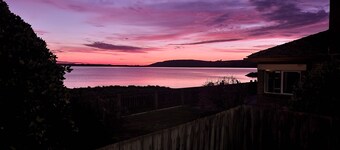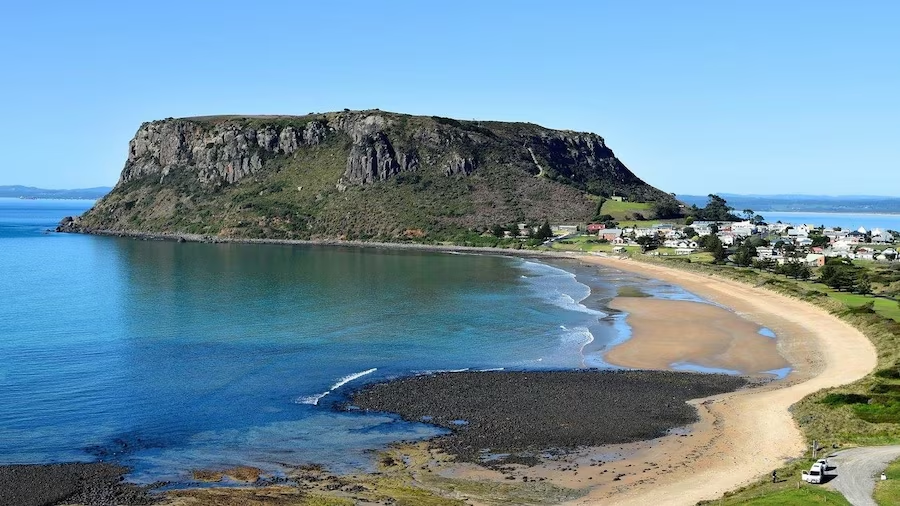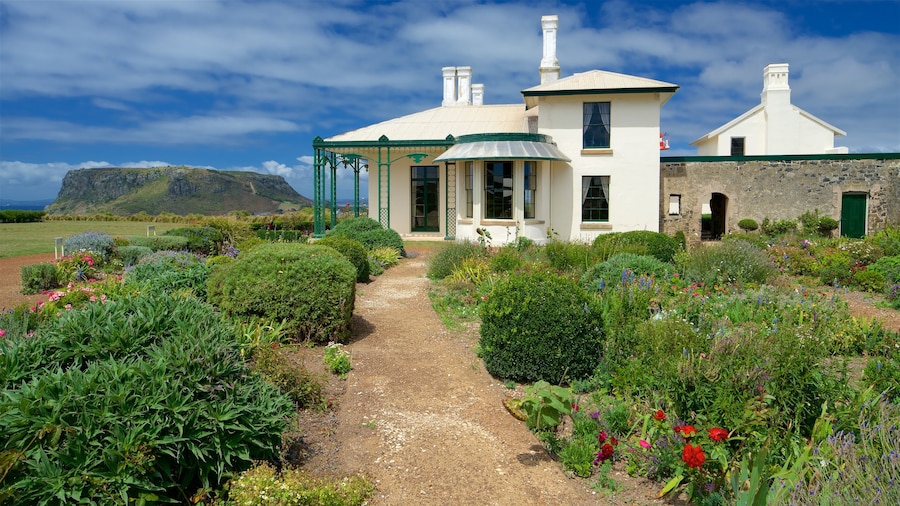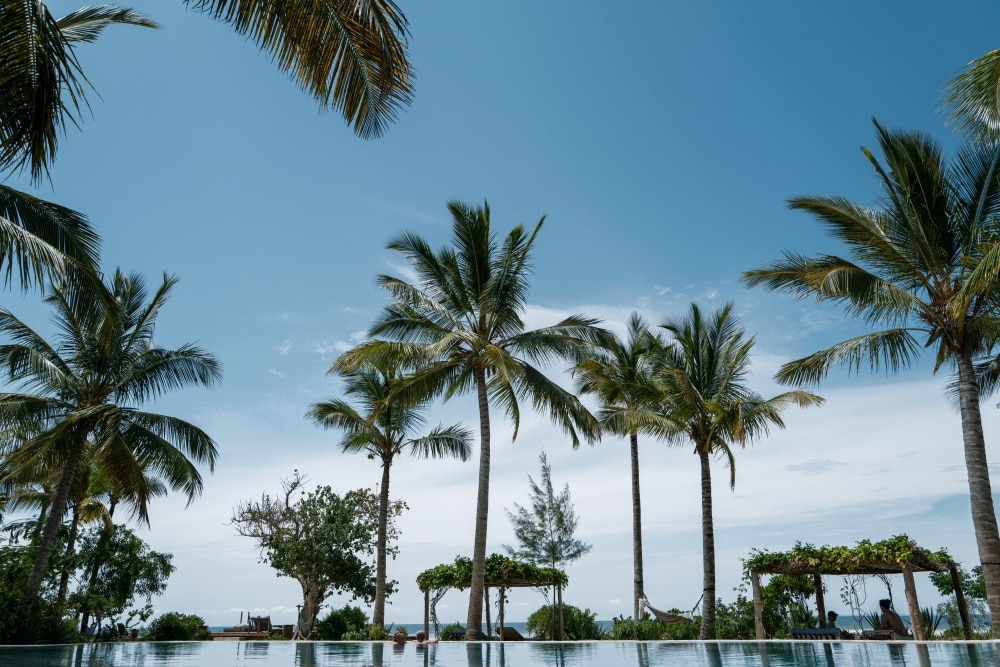스탠리는 너트라고 불리는 오래 전에 활동을 멈춘 화산의 기슭에 자리해 있습니다. 식민지 시대의 주택과 강한 바람에 노출되어 있는 험준한 해안선이 이 어촌 마을에 매력을 더해줍니다. 화산의 정상에 올라가 수상 스포츠를 즐기고 지역의 역사에 대해 알아보세요.
평평한 너트의 꼭대기에도 꼭 한 번 올라서 보세요. 해안과 시골의 전망이 아름답게 펼쳐집니다. 가파르고 구불구불한 등산로를 걸어서 정상까지 올라가세요. 그렇지 않고 리프트를 이용하면 에너지를 훨씬 덜 소모할 수 있습니다. 높은 전망 지점에서 여러분 중 일부의 다음 목적지일 수도 있는 로키 케이프 국립공원을 어렵지 않게 알아볼 수 있습니다.
스탠리에서 차로 약 15분 거리에 있는 이 국립공원에는 해변, 만, 바위 주거지 등이 포함되어 있습니다. 경치가 아름다운 산책로를 따라 걸어보거나 해변에서 낚시를 하고 보트를 타세요. 타킨 야생 보호 구역으로 향해 깊은 자연 속에서 모험을 즐겨보세요. 열대 우림 안을 하이킹하고 카누를 타고 강을 따라 내려가고 폭포에 잠시 들러 보세요.
강한 바람에 노출되어 있는 스탠리의 입지 조건은 수상 스포츠를 즐기기에는 더할 나위 없이 좋습니다. 바람이 있는 날에는 세일링, 서핑, 세일보딩, 카이트서핑에 도전해 보세요. 불 록까지 운항하는 Sylvia C 모터 크루즈 탑승권을 예약하여 수컷 물개들의 서식지를 보러 가보세요.
많은 사람들이 자연의 아름다움 때문에 이곳을 찾지만 스탠리에는 여러분의 방문을 기다리는 다양한 관광명소가 있습니다. 스탠리 해양 수족관에서 거대한 게, 가재, 상어 등을 포함한 더 다양한 지역의 해양 동물을 만나보세요. 헛간, 죄수 막사, 예배당이 있는 1830년대 섭정 시대의 건축물인 하이필드 히스토릭 사이트를 방문해 보세요. 여기에서 태즈메이니아 북서부의 첫 유럽 정착민에 대해 배울 수 있습니다. 몇몇 오래된 주택이 카페와 상점으로 탈바꿈한 스탠리의 거리들을 걸어 다니거나 자전거 투어로 돌아보세요.
태즈메이니아의 북서쪽 끝에 있는 스탠리를 찾아가려면 호주 본토에서 버니까지 항공편을 이용하세요. 버니에서 차로 서쪽으로 약 1시간을 달리면 이 그림같이 아름다운 마을과 아름다운 자연 환경에 닿을 수 있습니다.
















